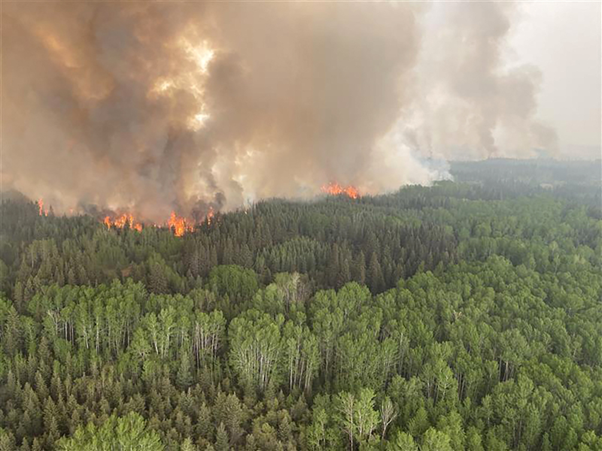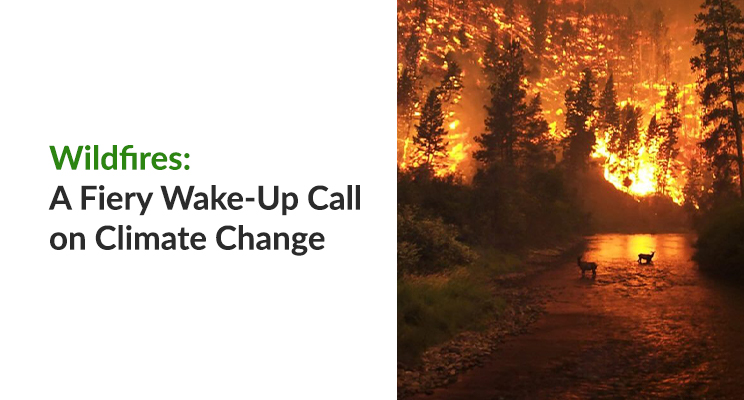In 2023 alone, wildfires burned over 4 million acres in the U.S., causing billions in damages and displacing thousands. These devastating events are more than just natural disasters—they’re fiery alarms signalling a deeper climate crisis. Wildfires have emerged as a tragic representation of environmental imbalance.
The recent wildfire in Los Angeles left a mark on the landscape and underscored the pressing need to confront the intertwined challenges of climate change and wildfire management. This article explores the science behind wildfires, their increasing connection to climate change, and practical measures we can implement to address this global issue.
Understanding Wildfires: Nature’s Role and Rising Threats
Wildfires are uncontrolled fires that ignite unexpectedly in natural environments like forests, grasslands, and prairies. Although they play a natural role in many ecosystems by aiding in nutrient recycling and renewing habitats, these fires’ rising frequency and intensity present significant environmental and social challenges.
Wildfires range from small, manageable flames to massive infernos that engulf vast landscapes. Their occurrence is determined by a mix of weather conditions, the availability of fuel, and sources of ignition.
A Closer Look: The Los Angeles Wildfire Crisis

The recent wildfire in Los Angeles drew worldwide attention due to its unprecedented scale. Driven by extreme heat and a prolonged drought, the fire-ravaged homes forced thousands of residents to evacuate and filled the air with thick smoke. This disaster highlighted the vulnerability of both urban and natural ecosystems when confronted with extreme climate conditions.
Notable Wildfires in California
Camp Fire (2018)
The deadliest wildfire in California’s history claimed 85 lives.
Destroyed the town of Paradise, causing over $16.5 billion in damages.
Dixie Fire (2021)
Largest single (non-complex) wildfire in California, burning nearly one million acres.
Fueled by extreme drought and strong winds.
Wildfires in Other Countries
Australia’s Black Summer/Bushfire season (2019-2020)
Burned over 46 million acres, destroyed thousands of homes, and caused the loss of an estimated three billion animals.

Greece Wildfires (2021)
Devastated the island of Evia, leading to mass evacuations and widespread environmental destruction.

How Do Wildfires Occur?
Wildfires occur when heat, oxygen, and fuel come together, a concept known as the “fire triangle.” Common sources of ignition include lightning strikes and volcanic eruptions as natural causes. Campfires, discarded cigarettes, arson, and failures in power lines as human activities. Conditions such as dry vegetation, high temperatures, and strong winds can quickly turn a small spark into a massive fire, highlighting the importance of prevention and early detection.
Wildfires and Climate Change, Is it an Interconnected Issue?
Climate change has become a significant factor in increasing the frequency and severity of wildfires. Here’s how it plays a role:
- Prolonged Droughts: Rising temperatures result in lower soil moisture, creating conditions ripe for fires.
- Extended Fire Seasons: Areas that previously saw wildfires for only a few months are now experiencing them throughout the year.
- Increased Lightning Strikes: A warmer atmosphere leads to more electrical storms, igniting fires in remote locations.
Wildfires also contribute to climate change by releasing large amounts of carbon dioxide, a key greenhouse gas, into the atmosphere. This destructive cycle requires urgent attention and action.
Overcoming the Challenge

Addressing the wildfire-climate nexus requires a blend of mitigation, adaptation, and community-driven initiatives:
Mitigation: Lowering greenhouse gas emissions through renewable energy sources, improving energy efficiency, and implementing carbon capture technologies. Explore climate action strategies.
Forest Management: Regularly removing dry underbrush, performing controlled burns, and safeguarding old-growth forests to minimise fire risk.
Community Preparedness: Informing residents about fire safety, developing evacuation plans, and ensuring access to firefighting resources. Learn about wildfire preparedness programs.
Global Collaboration: Governments and organisations should prioritise funding for wildfire research, early detection systems, and infrastructure that can withstand climate impacts.
Wildfires cause displacement, disrupt livelihoods and harm local economies while destroying habitats and threatening biodiversity. Smoke inhalation burdens healthcare systems with increased respiratory and cardiovascular issues. Driven by climate change, wildfires are becoming more frequent and intense, underscoring the urgent need for mitigation and adaptation strategies.
Every step we take today helps prevent tomorrow’s catastrophe, securing a safer planet for generations to come. Together, we can turn the tide against wildfires and build a more resilient future.


